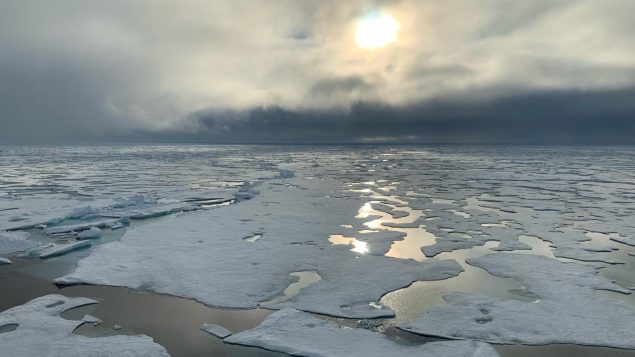A record warm summer in the Arctic shrank the sea ice covering the polar ocean this year to its second-lowest extent since the beginning of the satellite record in 1979, scientists announced Monday, yet another sign of how climate change is rapidly transforming the region.
Satellites recorded this year’s sea ice minimum at 3.74 million square kilometres on Sept. 15, only the second time the ice has been measured below 4 million square kilometres in 42 years of record keeping, said researchers at the National Snow and Ice Data Center (NSIDC).
“This appears to be the lowest extent of the year,” NSIDC report said.
“In response to the setting sun and falling temperatures, ice extent will begin increasing through autumn and winter. However, a shift in wind patterns or a period of late season melt could still push the ice extent lower.”
The previous record was reached in 2012 when the minimum sea ice extent shrank to 3.39 million square kilometers.
- Sea ice extent in the Arctic reaches historical low in July
- Arctic science expedition reaches North Pole due to melting sea ice
- Arctic summer sea ice could be gone by 2035, new study forecasts
The 14 lowest extents in the satellite era have all occurred in the last 14 years, according to the NSIDC.
“It’s fairly devastating that we’ve had such consistently low sea ice. But unfortunately, it’s not surprising,” Twila Moon, a glaciologist at the research centre in Boulder, Colorado, said in an interview with Reuters.

Heading for the new MOSAiC ice floe, German research icebreaker Polarstern took the shortest way to the area of interest: via the North Pole. On the way north, the sea ice was surprisingly weak, had lots of melt ponds, and Polarstern was able to easily break it, said Captain Thomas Wunderlich. (Photo courtesy of Alfred Wegener Institute)
According to scientists at NASA Earth Observatory, sea ice has a profound influence on the polar environment, influencing ocean circulation, weather, as well as regional and global climate.
The white surface of the sea ice acts like a giant mirror that reflects far more sunlight back to space than darker ocean water does. Once sea ice begins to melt, it often triggers a self-reinforcing cycle. As more ice melts, exposing more dark water, the water absorbs more sunlight. The sun-warmed water then melts more ice.
Over several years, this positive feedback cycle can influence global climate, according to NASA Earth Observatory.
Sea ice also plays a fundamental role in polar ecosystems and supports a variety of life forms from bacteria and phytoplankton to seals and polar bears.
And sea ice is essential for many northern and Indigenous communities who’ve used it for millennia to hunt, fish and travel.







For reasons beyond our control, and for an undetermined period of time, our comment section is now closed. However, our social networks remain open to your contributions.